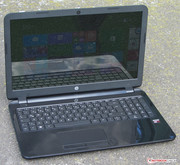Before you begin
- Drivers Csm Port Devices Download
- Drivers Csm Port Devices Inc
- Drivers Csm Port Devices Jobs
- Drivers Csm Port Devices Gigabit
Driver updates for Windows 10, along with many devices, such as network adapters, monitors, printers, and video cards, are automatically downloaded and installed through Windows Update. You probably already have the most recent drivers, but if you'd like to manually update or reinstall a driver, here's how:

Unknown devices show up in the Windows Device Manager when Windows can’t identify a piece of hardware and provide a driver for it. An unknown device isn’t just unknown — it’s not functioning until you install the right driver. Windows can identify most devices and download drivers for them automatically. Hey everybody, is it possible to connect multiple Serial devices to one Serial port. I have 10 Serial devices, that send data once per second, so I was thinking about connecting them all to the same Serial port (hardware or software) of the Arduino and let them send with a delay of 100ms. A library of over 250,000 device drivers, firmware, BIOS and utilities for Windows. Our problem is one of our devices (an analyzer) is identified as a USB 2.0 device (Standard Enhanced PCI to USB Host Controller) even if we plugged it into a supposed to be USB 3.0 port. We did confirm that it was indeed a USB 3.0 port by plugging an external drive, and in Device Manager it's connected to the USB 3.0 connector (Intel USB 3.0. Finding the serial port (which constantly changes, every time you plug a device in), is just matter of checking device manager (see above). Mass Storage It should be a simple matter of opening the drive, in this case, double click on “D”, to get at the info.html page.
Drivers Csm Port Devices Download
Update the device driver

Drivers Csm Port Devices Inc
In the search box on the taskbar, enter device manager, then select Device Manager.
Select a category to see names of devices, then right-click (or press and hold) the one you’d like to update.
Select Search automatically for updated driver software.
Select Update Driver.
If Windows doesn't find a new driver, you can try looking for one on the device manufacturer's website and follow their instructions.
Reinstall the device driver
Drivers Csm Port Devices Jobs
In the search box on the taskbar, enter device manager, then select Device Manager.
Right-click (or press and hold) the name of the device, and select Uninstall.
Restart your PC.
Windows will attempt to reinstall the driver.
Drivers Csm Port Devices Gigabit


More help
If you can't see the desktop and instead see a blue, black, or blank screen, see Troubleshoot blue screen errors or Troubleshoot black or blank screen errors.
